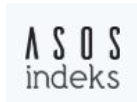Kurum Kültürü Oluşturma ve Dil Becerileri ( Creating Institution Culture and Language Skills)
Anahtar Kelimeler:
Kurum kültürü- dil becerileri- kurum kimliğiÖzet
Bir kurumun kişiliği kabul edilen kurumsal kültür, günümüzde teknolojik ve kültürel gelişmelerle daha fazla önem kazanmaya başlamıştır. Kurumların kendilerine özgü bir kültür oluşturma çabalarının sebebi, kültürün iş yaşamındaki olaylar, çalışanlar ve müşteri ilişkileri üzerinde oldukça etkili olmasıdır. Kurumlar, varlıklarını sürdürebilmek için kurum kültürünü önemsemek zorundadır. Sağlam bir kurum kültürüne sahip olan örgütler başarıya daha hızlı ve kolay ulaşırlar. Bu yazıda, kurum kültürü oluşturulmasıyla, kurumsal iletişimin de ayrılmaz bir parçası olan dil becerilerinin ilişkisine dikkat çekilmeye çalışılmıştır. Alan taraması sonucunda; kurum kültürü ile ilgili olan çalışmaları, genellikle insan kaynakları yönetimi ve iletişim sektöründe hizmet veren uzmanların ortaya koyduğu tespit edilmiştir.
Türk dili edebiyatı ve Türkçe eğitimcilerinin daha önce bu hususta herhangi bir çalışma yapmadığı bilinmektedir. Biz, Kurum Kültürü Oluşturma ve Dil Becerileri başlıklı çalışmamızda, kurum kültürünün iletişimle yakından ilgili olan dil becerileri alanıyla ayrılmaz bağını göz önüne koymayı amaçladık.
Referanslar
Aksan, D. (2007). Her yönüyle dil ana çizgileriyle dil bilim-I (4.Basım). Ankara: Türk Dil Kurumu Yayınları.
Aktaş, Ş. ve Gündüz, O. (2001). Yazılı ve sözlü anlatım kompozisyon sanatı. Ankara: Akçağ Yayınları.
Atay, O. (1999). Örgüt kültürü ve süreci. http://tebesirtozu.blogcu.com/orgut-kulturu-ve- sureci/1183387 kaynaktan 20/11/2017 tarihinde alınmıştır.
Brown, R. H. (2002). Retorik, Tekstüalite ve Sosyolojik Teoride Postmodern Dönüş. İçinde Arslan, H. (Edt.). Retorik, Hermeneutik ve Sosyal Bilimler: İnsan Bilimlerinde Retoriğe Dönüş. İstanbul: Paradigma Yayınları.
David, N., Berg, Kenwyn K. Smith. (1988). The self in social inquiry: researching methods paperback. Donnellon, A. (1998). Takım dili. İstanbul: Sistem Yayıncılık.
Durğun, S. (2006). Örgüt kültürü ve örgütsel iletişim. Yüzüncü Yıl Üniversitesi, Eğitim Fakültesi Dergisi, III (II), 112-132. http://efdergi.yyu.edu.tr.
Erengül, B. (1997). Kültür sihirbazlar. İstanbul: Evrim Yayınevi.
Eroğlu, E. ve Özkan, G. (2009). Örgüt kültürü ve iletişim doyumu ile bireysel özellikler arasındaki ilişkinin değerlendirilmesi: bir uygulama örneği. Selçuk İletişim, 5, 4.
Fairhurst, G. T. ve Putnam, L. L. (1999). Reflection on the organization-communication equivalency question: the contributions of james taylor and his colleagues. The Communication Review, 3, 1- 19.
Fairhurst, G. T. ve Putnam, L. L. (2004). Organizations as discursive constructions. Communication Theory, 14, 5-26.
Gudykunst, W. B. (1997). Cultural variability in communication. Communication Research, 24(4), 327- 348.
Gülsünler, M. E. (2005). Kurum kimliği süreci ve işleyişi üzerine teorik ve uygulamalı bir çalışma.
Selçuk Üniv. Sosyal Bilimler Meslek Yüksek Okulu Dergisi, 8 (1-2). Gürgen, H. (1997). Örgütlerde iletişim kalitesi. İstanbul: Der Yayınları.
Hogg, M. A. ve Vaughan, G. M. (2017). Sosyal psikoloji (Çev: Yıldız, İ. ve Gelmez, A.) Ankara: Ütopya Yayıncılık.
Kavcar, C. vd. (2016). Türkçe ve sınıf öğretmenleri için Türkçe öğretimi. Ankara: Anı yay. Öngör, Y.A. (2015). Benden sonra devam. İstanbul: Alametifarika Yayıncılık.
Poole, M. S. Putnam, L. L. and Seibold, D. R. (1997). Organizational communication in the 21st century.
Mamagement Communication Quarterly, 11.
Seeger, M. W. (2001). Ethics and communication in organizational contexts: moving from the fringe to the center. American Communication Journal, 5.
Sever, S. (2011). Türkçe öğretiminde tam öğrenme. Ankara: Anı Yayıncılık.
Şimşek, Ş. vd. (2001). Davranış bilimlerine giriş ve örgütlerde davranış. Ankara: Nobel Yayıncılık. Şişman, M. (2007). Örgütler ve kültürler. Ankara: Pegem A Yayıncılık.
Taylor, J. R. (2001). The ‘Rational’ organization reconsidered: an exploration of some of the organizational implications of self-organizing. Communication Theory, 11.
Telman, N. ve Ünsal, P. (2005). İnsan ilişkilerinde iletişim. İstanbul: Epsilon Yayıncılık.
Uzoğlu, S. (2011). Kurumsal Kimlik, Kurumsal Kültür ve Kurumsal İmaj. Kurgu Dergisi, 18, 337-353. Vural, Z B. (2005). Kurum kültürü. İstanbul: İletişim Yayınları.
Yalçın, A. (2006). Türkçe öğretim yöntemleri. Ankara: Akçağ Yayınları.
İnternet Kaynakları
http://oys.hku.edu.tr/Dersicerikleri/eisl506/pdf/6.pdf adresinden 01.12.2017 tarihinde alınmıştır. http://notoku.com/kurumsal-imaj/ adresinden 01.12.2017 tarihinde alınmıştır. http://notoku.com/kurumsal-dizayn-kultur-ve-imaj-iliskisi/ adresinden 29.12.2017 tarihinde alınmıştır.
Yayınlanmış
Nasıl Atıf Yapılır
Sayı
Bölüm
Lisans
Telif Hakkı (c) 2023 Anadolu Kültürel Araştırmalar Dergisi (ANKAD)

Bu çalışma Creative Commons Attribution-NonCommercial 4.0 International License ile lisanslanmıştır.













